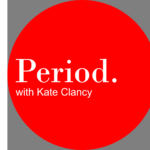Wednesday, February 28th 2018
Transcript of my oral testimony from February 27th Congressional hearing on sexual misconduct in the sciences
A number of folks have asked for the transcript for my oral remarks at yesterday’s hearing of the Congressional Subcommittee on Research & Technology (see the whole hearing here). So, here it is. While I made sure to get feedback from many people for my written testimony, I wrote the oral testimony without input, and I wrote it for you. If you’d like to read my longer, written testimony, full of citations as well as quotes from interview respondents, you can find it here.
***
Thank you for the opportunity to share my research and expertise with you today, and thank you for taking on such an important topic. I want to start by sharing a bit about what sexual harassment is, how it manifests in the sciences, and what I hope you’ll help us do about it.
Sexual harassment comes in two main forms – come ons, which are unwanted sexual advances and sexual coercion, and put downs, also called gender harassment, non-sexual behaviors that are crude or hostile regarding gender. While the come ons are the types of behaviors you see in articles about Harvey Weinstein and in sexual harassment trainings, the majority of sexual harassment are in fact the put downs. These are the kinds of behaviors most women in the workplace have experienced at least once in their lifetimes, and many experience every day. The offensive remarks, subtle exclusions, requests to make coffee, yes, but also starting rumors, sabotaging a promotion, or ruining a career.
One of the more recent cases of sexual harassment in the sciences is by alleged perpetrator David Marchant, a Boston University geologist who conducted fieldwork in Antarctica. This case involved horrifying and physical gender harassment: blowing volcanic ash into the already snow blind eyes of a grad student, pushing her down a mountain multiple times, throwing rocks at her if she dared go to the bathroom.
There are a few conditions that make sexual harassment more common in the workplace. When workplaces are male dominated, not just in numbers but in culturally how they behave, sexual harassment happens more. When workplaces demonstrate that they’re tolerant of sexual harassment, by ignoring reporting, retaliating against reporters, or not sanctioning perpetrators, sexual harassment happens more. In 2016 the EEOC wrote a report that showed that only a quarter of sexual harassment is reported, and of those who report, three quarters of them faced retaliation. I study sexual harassment in the sciences because I am a scientist, I care about science, and I’m interested in the ways in which the manifestation of harassment varies by work context. But this is a problem not just of science, but of American workplaces.
In the sciences, sexual harassment looks like this: women having less access to their advisors, to the materials they need to conduct their research, and withstanding constant questioning of their intelligence and worth. I have stories of sabotaged lab equipment, of intentional safety violations, of rumormongering and yes sometimes of sexual assault and rape. What bothers me the most about how it usually looks in science is that we wrap sexual harassment up in this package that we claim is intellectual rigor, and meritocracy. It’s like we think that rudeness and cruelty are the same thing as being smart without noticing that we direct these cruelties more at women than men, more at women of color than white women, more of sexual minorities than straight folk.
We say that asking a nasty question at a colloquium is how we push people to be better scientists. We say when we see an all-male research team that it must just be that the best scientists for the job were all men. We say that the sole woman in a department is the affirmative action hire. We spend all this taxpayer money supporting recruitment of women to STEM fields, and supporting their educations, only to lose that money when they are forced out by damaging behaviors. We also lose their diversity of perspectives, and thus end up with a flatter, more boring, less complex and less innovative American science.
Too often I’ve heard that harassment and bad behavior are the price we must pay for star scientists. But are they really doing star science? When I’m writing my papers or analyzing my data on sexual harassment in the sciences, I’m thinking of the victims and the science we’ve lost. We lost their ideas, we lost their perspectives. We scientists do this work because we want to give the best of ourselves to the advancement of science. Women keep trying to give us their best, and we blow ash in their faces and push them down mountains.
The way we’ve tried to fix this problem isn’t working, we have decades of evidence to prove it. Let’s move away from a culture of compliance and towards a culture of change. Let’s convince universities to worry less about litigation and more about legacy. Do you want to be on the right side of history when it comes to how you center victims and how you improve the lives of women? Do you want to be the hub for exciting, groundbreaking science? Do you want to be the place everyone wants to work at, or the place all the women warn each other about?
I hope you will join me in encouraging universities and other science workplaces to take a values-into-action approach to eliminating sexual harassment. That means locational, contextual solutions that create respectful and equitable climates for everyone. That means focusing on the behaviors we want to see, not creating fear around the legally actionable ones. And that means creating confidential avenues for women to speak, and to be heard.
I just want to say one last thing, because this testimony is public record and it’s important that I say it. In a climate where perpetrators are being centered and where the conversation has been on reporting and speaking up, I want to say today to victims that I see you. I see you whether or not you report, whether or not you have been in one of my studies. I see you when you email me, tweet at me, when you stay silent. I see you and I think of you and I thank you for getting up every day, and I derive strength from you. I hope you know how much you mean to those of us who do this work.
Thank you.
 Excerpt: Join Kate as she talks to grad student Holly Horan from her fieldwork in Puerto Rico on the effects of stress on pregnancy and preterm birth. Show notes can be found at kateclancy.com/period23. And don’t forget to use coupon code “periodpodcast” for 50% off your order at elleboxco.com!
Excerpt: Join Kate as she talks to grad student Holly Horan from her fieldwork in Puerto Rico on the effects of stress on pregnancy and preterm birth. Show notes can be found at kateclancy.com/period23. And don’t forget to use coupon code “periodpodcast” for 50% off your order at elleboxco.com!
